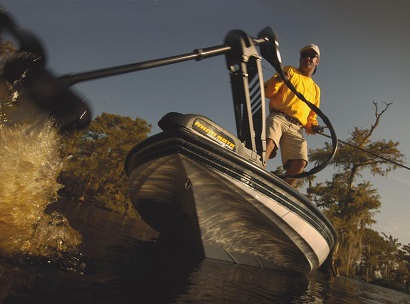An angler’s satisfaction comes from a bountiful fishing trip. As such, stealth is one major factor that helps increase the anglers’ chances of having a good catch.
However, it is almost impossible to achieve stealth with a loud gasoline boat engine. Thus, most anglers install electric trolling motors to help navigate the waters.
The lifespan of your trolling motor greatly depends on how well you use and maintain it. Hence, it would be best to make some adjustments and fine-tunes to help improve the overall performance and lifespan of your trolling motor.
In this article, we will discuss some proven ideas you can employ in order to increase the efficiency of your tolling motor.
Alleviating Trolling Motor Damages
Your trolling will sustain a significant beating if you do not put measures to mitigate damages. In general, damages on a trolling motor are highly likely to occur on the trolling motor itself, power, or the control systems.
Rinsing your trolling motor with clean and fresh water after a fishing trip is the simplest maintenance routine you ought to practice; rinsing helps prevent accumulation of salts on the trolling motor.
Essentially, a circuit breaker cuts power supply to the electrical systems in case of a power surge or a short circuit.
Furthermore, you can install heat sink and cooling fans in your electrical boards to help prevent overheating, saving both the electronic components and energy dissipation.
Buying trolling motor parts online gives you a chance to get all the necessary reviews before committing your money.
Reducing the Running Strain on Your Motor
The worst mistake you can ever make when using a trolling motor is cranking up the throttle to full power while at rest. Feeding the motor with too much current while the boat is at rest causes a power overload in the armature coils; overloading the armature will burn the copper coils after some time.
Thus, the best way to induce motion in a still boat is by gradually accelerating to gain speed. You also need to ensure that your battery connections are firm in order to prevent power trips as you try to accelerate.
Improve Your Motor’s Rigging
Much of your trolling motor’s performance will greatly rely on how sturdily you attach it to your boat. Primarily, mounting a trolling motor to a bot requires a clamp that positions the entire system to one end of your boat. As such, it would be best to consider using stronger trolling motor mounts to avoid loose attachments.
Additionally, you can use firm holds to anchor your trolling motor to your boat with significant holding force; you want a mounting hold that can provide a holding force of at least 500 pounds.
Improving your trolling motor’s rigging not only helps reduce vibration, but also helps your motor withstand tough element such as resistance from sea weeds and water currents.
Enhancing Your Motor’s Power Systems and Controls
Most trolling motors are driven by electrical power (hence the name electric trolling motor). Basically, how efficient you trolling motor runs varies with the power settings, supply and controls.
Inherently, reducing the obstructions on your propeller blades significantly increases efficiency. Your trolling motor will not produce sufficient thrust if the propeller blades and shaft are covered in sea weed and the entangled fishing lines.
Additionally, improving the steering controls helps keep a steady course, increasing the boat’s stealth over the water. Your trolling motor is always ‘fighting’ against water current and debris.
Proper steering control improves the boats maneuverability while reducing power wastage. As such, always inspect your power connections in order to curb any potential power supply inefficiencies.
Quiet Down Your Trolling Motor
A noisy trolling motor significantly reduces your chances of getting hold of fish. Ideally, you cannot attain stealth if your trolling motor is rattling and disrupting the fish’s peace. As such, it would be best to dampen any vibration coming from the trolling motor.
Some of the ways you can dampen trolling motor noises and vibrations include tightening the propeller blades, evading water debris, and reducing metal-on-metal contacts from mounting holds.
Conclusion
Buying and installing a trolling motor requires a significant monetary investment. Thus, following the guidelines discussed above will help improve the efficiency as well as extend the lifespan of your trolling motor.



